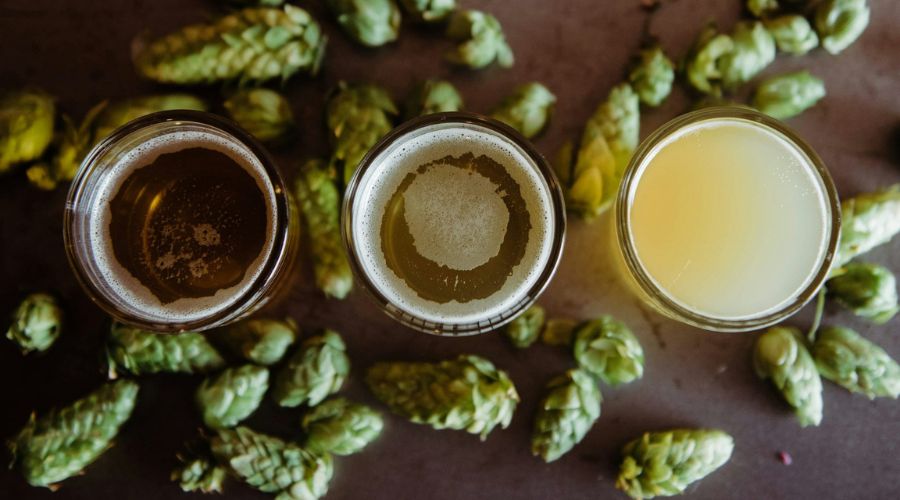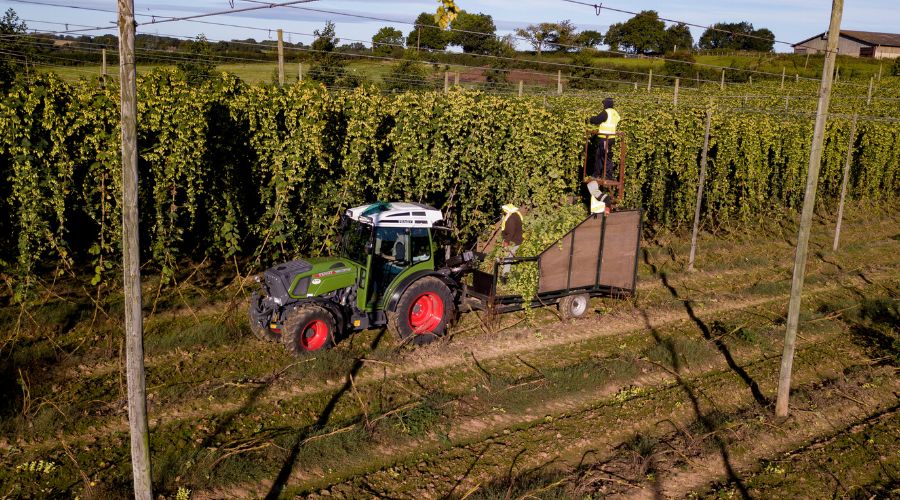Independent breweries return to pre-pandemic levels of production
10th May 2024
The 2024 spike in demand for beer is encouraging for British hop growers supplying independent breweries.

The SIBA Independent Beer Report 2024 revealed data showing, on average, beer production among craft breweries is on the rise.
Compared to 2023, this increase has grown by 14%.
Returning cask beer has also seen a large rise, with volumes up 10% year-on-year.
Findings in the report state that there is a ‘growing consumer pull for independent craft beer, with 55% of beer consumers saying they now drink local craft beer.
‘Up from 47% who said they drank it in 2023, placing it level with global lager.’
British hops
The Hop Shed, a brewery in Worcester, are back to pre-Covid production levels and are proud to use 100% British hops.
Speaking to Fruit&Vine, Sarah Saleh, founder and brewery manager said: “I began brewing in my garage in South London.
“I used hops from all over the world in my beers.
“When we decided to set up our brewery on a hop farm in Worcestershire, I experimented with hops grown on the farm, adapting my recipes to use only locally grown varieties.

“Being situated on a hop farm, it made sense to use the hops grown on the farm in our beers.
“I was pleasantly surprised by the range of flavours and aromas available from British hops back in 2016.
“But it’s nothing compared to what’s available now!
“The hop development programmes at Charles Faram and Wye Hops have produced some stunning new commercial varieties of hops.
“Harlequin, Godiva and Olicana and are producing some really exciting new experimental varieties.
“We’ve been using some of these in a range of ‘Trial Hop’ brews this year and the results have been amazing.
“There’s been more intensity of flavour than we’ve ever tasted before from British hop varieties.

“At such an exciting time for British hops, and with such a wide range of hop varieties being grown in Worcestershire and Herefordshire, it seems madness to import hops from across the globe.
“Any reduction in food miles can only be a good thing!“
SIBA chief executive Andy Slee said: “The short-term issue for small independent breweries isn‘t demand; it’s profitability, rising costs and financial pressures such as lingering Covid debt.
“Far too many breweries are simply trying to survive rather than thrive, so whilst there are many positive signs highlighted in the report, for now it’s cautious optimism.”

Fighting for survival
The report outlined 43% of independent brewers cited ‘survival’ as their top priority.
However, this figure is down from last year, where SIBA stated: ‘a majority of 63% were just trying to survive’.
Too much, too young
Another red flag revealed through this report is the amount of young people consuming beer.
The figures show just 30% of 18-24-year-olds drink beer, falling behind wine and spirits.
Almost a quarter of consumers, 24%, said they had never visited their local pub.
According to brewing trends, stout, best bitter and pale ale hold the first three places respectively, with lager coming in at a respectable fourth.
Demand for traditional beer styles is prevalent and seemingly on the rise again.
Lager has continued its rise in popularity with 56% of independent brewers now producing a craft lager.
This is a 5% increase on the previous year, and the biggest growth category for 2024.

Alcohol-free zone
Also on the rise is non-alcoholic beer. The number of breweries now making an alcohol free beer is up to 8%.
Slee concluded: “No and low alcohol beer is massively increasing in popularity.
“Thanks to new technologies, which make it easier to produce great-tasting low or no alcohol beer, more independent breweries than ever are catering to this growing market.”
Read more about drinks.
